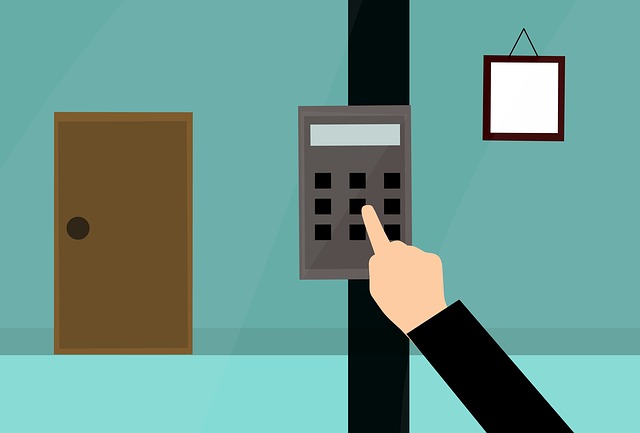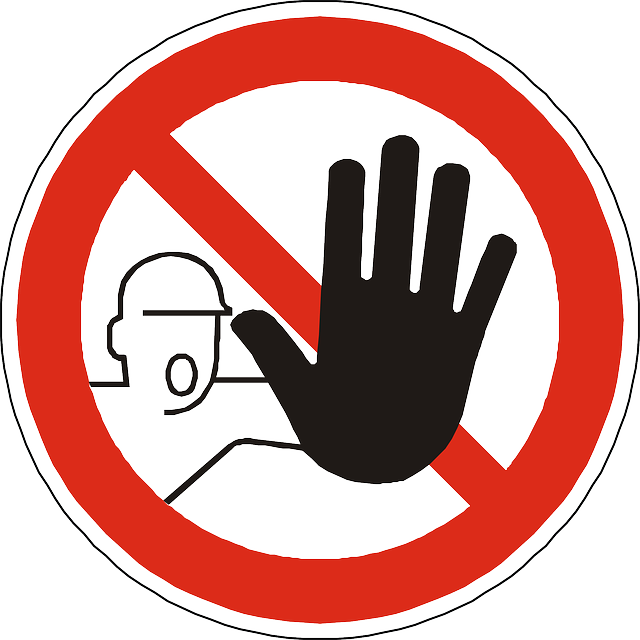When we secure a business, we take several apporaches to block and track access to your building. Installing a burglar alarm and cameras goes a long way towards detecting unwanted “visitors” to your property. However, these measures also fail to address certain important business security concerns. For example, burglar alarms do not block entry to employees or former employees with a key and an alarm code. Furthermore, they do not track attempted but failed breaches to your exterior doors or senstive doors within your property. However, we offer a solution for these issues in the form of our access control systems. In this post, we provide both an overview of this area of security and an in-depth look at your access control options.
First, we’ll provide a valuable description of an access control system’s purpose and operation. From there, we’ll see the options you have for access control “credentials.” You have a few options regarding the technology that grants your employees access to your business. Then, we’ll detail how you can create different “levels” of access for different users. Finally, we’ll also explain how using access control software provides you with added security benefits. Now, let’s dive in and see how we add security by installing access control!
Your Access Control Primer
Over the past several years, access control systems have gotten increasingly popular. This security measure involves using advanced lock equipment to control access to your property. Access control systems utilize electronic locking hardware to operate specific doors within a business. Rather than using a key at these doors, users approach a keypad or a reader and present either a code or a physical credential. We’ll get into the specifics regarding these options a little later. Users who present an approved credential will then be able to open the door after the reader interacts with the door’s electronics to unlock it. Business owners can assign each credential to open only certain doors at specific times, giving them tremendous control over who can open which doors, and when.
In addition to controlling access to certain doors, access control systems include software that tracks access as well! Every time an employee approaches an access door, it creates a time-stamped event that you can view on a computer by logging in to your access control system’s software. This allows you to easily track employee activity within your business. Furthermore, it allows you to see if anyone tries to enter doors in your business that they should not attempt to enter.

Access control keypads provide access to doors without the need for a physical credential.
For example, if an employee without the necessary permission attempts to enter a secure room, the system will both deny access and “flag” this event. At that point, you will know which employee attempted this breach. The security and flexibility offered by these systems makes them an extremely valuable piece of any commercial security plan. Now, let’s look at the various types of credentials you can use to interact with your access control system.
Selecting Your Access Credentials
One of the most important access control options revolves finding the credential technology that works for you. Most popularly, we generally install “proximity” readers that can read a card or a keyfob. As an added option, these readers can even use Bluetooth technology that allows users to scan their phones as a credential. As an added option, we can also install keypads to control your doors. This makes it impossible for users to lose their credentials, since no physical credential exists. Of course, if codes get unknowingly shared, this can create a security threat. This possibility makes keypads slightly less popular than readers, especially in larger businesses.
Finally, we can also install biometric readers to operate your access control doors. These unique readers interact with users’ physical features to grant access to your building. For example, fingerprint or handprint readers make up popular biometric readers. Higher-tech readers can even scan customers’ retinas to approve or deny access to a door! While very secure, these readers often prove cost-prohibitive. Additionally, grease and sunlight can also affect their ability to properly identify users’ features after time. These drawbacks make them less popular than proximity readers or keypads, despite the high level of security they provide. Next up, let’s see how you can customize the access you provide your employees.
Controlling Your Access Levels
Once you’ve chosen how you and others will operate your access control system, you can create different levels of access. For example, you probably want a few individuals to have full-time access to your business’s doors. Users on this level can get into any secured door, at any time. From there, you can freely mix and match door access and time access all you want. Many customers wish to grant some users business-hours-only access. Likewise, some customers like to specify which doors certain individuals can enter.
Finally, security-savvy customers can combine time and door-specific access for added security. For example, you may have an employee who you wish to grant access to your front door at any time. However, you may wish for this same person to stay out of the management suite of your business outside of normal work hours. We also offer this level of customization to our access control customers! The ability to make these systems as simple or complicated as you desire helps make them so effective and popular. Now, let’s wrap up our conversation on access control options with an overview of our access software.
Using Your Software Effectively
When we install access control, we equip our customers with powerful software. This software allows them to program different levels of access to different users, as described above. You can do this programming onsite usuing a computer, or even offsite by remotely logging in to the access control software. In addition to programming users’ access levels, this powerful software provides other features as well. For example, you can use this software to completely remove users’ access to your building altogther. This feature proves especially useful when employees leave your business or even lose their access credentials. The ability to do this remotely means that you can perform this important task quickly from home.

If someone attempts to enter a prohibited area, your access control system will create a “tagged” event for your review.
Moreover, you can also use your software to check on both successful and unsuccessful attempts to access your business. We mentioned this feature earlier. Our access software allows you to review these activity alerts remotely or onsite. Want to see what time an employee came through the front door on a given day? You can do so by reviewing your access control event log. Furthermore, a failed attempt at accessing a blocked door will create a “flagged” event alert that will pop up when you access your software. Therefore, if someone attempts to enter a door that they shouldn’t do to security or time contraints, you will know! Our customers love the extra level of security their access control software provides.
Choosing the Access Control Options that Work for You
We hope that this post helps you understand your access control options for your own commercial property. Moreover, we encourage you to contact us with any questions the material presented here raises for you. We will glady answer any security-related queries you may have. Additionally, we also encourage you to take advantage of our free site survey program. We offer complimentary security audits and equipment quotes to both new and existing customers alike. While on site, we can address any security concerns you may have. Furthermore, we can also make suggestions of our own based on observations made during our visit. Together, we can create an access control plan to help you lock down your business and keep your property and valuables as safe and secure as possible.
